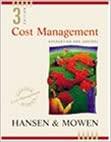Question
Nexus of generative influence, ecologies of innovation and opportunity exploitation Further, hypothesis H2c findings reveal that, ecologies of innovation (EoI) fully mediates the relationship of
Nexus of generative influence, ecologies of innovation and opportunity exploitation Further, hypothesis H2c findings reveal that, ecologies of innovation (EoI) fully mediates the relationship of nexus of generative influence (NGI) with opportunity exploitation (OE) ( = . 141, p = 000). It was found that NGI on its own cannot influence OE without EoI. Therefore, EoI is a true driver and a conduit through which NGI relates with OE. When business owner/manager create enabling environment like flexible policies, flat structures, allowing employees to deviate from the norms to come up with new ways of doing things, the SME is likely to explore and exploit opportunities competitively. NGI offers a view of how individuals at all levels can make a difference in their organizations by creating EoI. When NGI creates EoI in the workplace, it enables experiments in novelty to promote innovative practices, processes and routines. Fonfara et al. (2018) contend that, when NGI creates an enabling environment, employees are likely to interact with each other to come up with new ways of exploring and exploiting opportunities. NGI enable an organization to become adaptable to the unprecedented levels of change characterizing today's business environments. Mayanja et al. (2020) posit EoI cannot be created on its own without generative leadership creative abilities. Complex Systems Leadership Theory supports the findings.
Test of moderation Hypothesis H3b results also indicates that interaction effect of firm size has relationship between symbiotic resonance (SR) and ecologies of innovation (EoI) as graphically presented. Firm size ( = 0.112; t = 2.008; p = 0.045) established significant negative moderation on the relationship between SR and EoI. Moreover, the introduction of interaction effects in the model produces change in the coefficient of determination (R2 ). The explained variance in EoI is improved by introducing interaction effect of firm size in the study model. Firm size interaction reflects a change in R2 -value from 0.288 to 0.30. Even though the change is very small for moderations, still R2 play a significant role in analyzing the interaction effect (Hair et al., 2017). This means that interaction effect of firm size and SR has a negative significant effect the relationship between SR and EoI. This means that, when the level of innovation is low, required resources like money, people, and technology may not be adequately available. In addition, business structures, flexible policies that protect individuals in the process of executing their duties may not be in place to influence the level of innovations. The availability of resources and structures encourage employees to come up with innovative ideas. In big organizations, job descriptions are well stated with rewards attached. Big firms can attract talented employees because they have space for innovations and recognition based on new ideas in processes, products, services and strategies unlike SMEs in developing countries.
PLS_SEM moderation for opportunity exploitation. SMEs in developing economies like Uganda may not attract highly skilled and talented employees because of scarce resources. Innovative employees are normally not retained as they tend to have divergent views from the owner/manager. SME owners/managers tend to reward loyalty as opposed to innovation, which negatively affect EOI. Thongsri and Chang (2019) found that SR between business ties, customers, and competitor ties moderate the government support and innovation behavior relationship. This study was among private firms with big SMEs compared to Uganda. As innovation is a key component in the knowledge production function, it would seemingly follow that small firms are burdened by an inherent innovation disadvantage (Audretsch, Hafenstein, Kritikos, & Schiersch, 2018).
Based on the discussion and conclusion, make recommendations based on the following:
- Theoretical implications
- Methodological implications
- Policy implications
- Managerial implications
- Recommendations for future research and justify why.
Step by Step Solution
There are 3 Steps involved in it
Step: 1

Get Instant Access with AI-Powered Solutions
See step-by-step solutions with expert insights and AI powered tools for academic success
Step: 2

Step: 3

Ace Your Homework with AI
Get the answers you need in no time with our AI-driven, step-by-step assistance
Get Started


